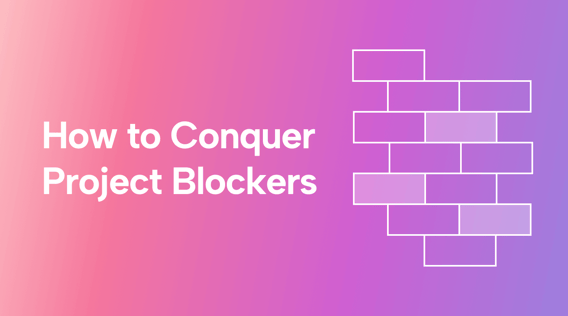As professionals, we've all experienced project blockers.
They're those pesky obstacles that arise during a project that prevent it from moving forward. They can also cause frustrating delays and can even derail entire projects.
But what are project blockers? And how do we transform them into success?
In this article, we’ll explore the different types of project blockers. We’ll review how to identify them, the issues they can cause when left unresolved, and practical strategies for turning them around. And to top it off, we’ll also introduce you to Motion, the powerhouse that can help you easily manage blockers.
Let's get started.
What are project blockers?
In most sports, a blocker is a defensive player who keeps your favorite team from scoring by preventing your team’s advances toward the goal. Similarly, project blockers are like problems that stand in the way of progress.
Sometimes blockers are caused by tasks or activities that depend on each other. But blockers come in many flavors. In the case of blockers that are caused by task dependencies, let’s look at how this happens with a quick example where we’re baking a cake.
Before we can frost the cake, we first need to bake it, and before we can bake it, we need to make the cake mix. Each step depends on the previous one, forming a chain of tasks that must follow a specific sequence. This dependency creates a project blocker because any delay or issue with the cake mix will impact baking and frosting.
Blocker vs. dependency
In the traditional sense, blockers and dependencies are similar concepts; however, they have different meanings. Think of dependencies as one unique and rather friendly kind of blocker.
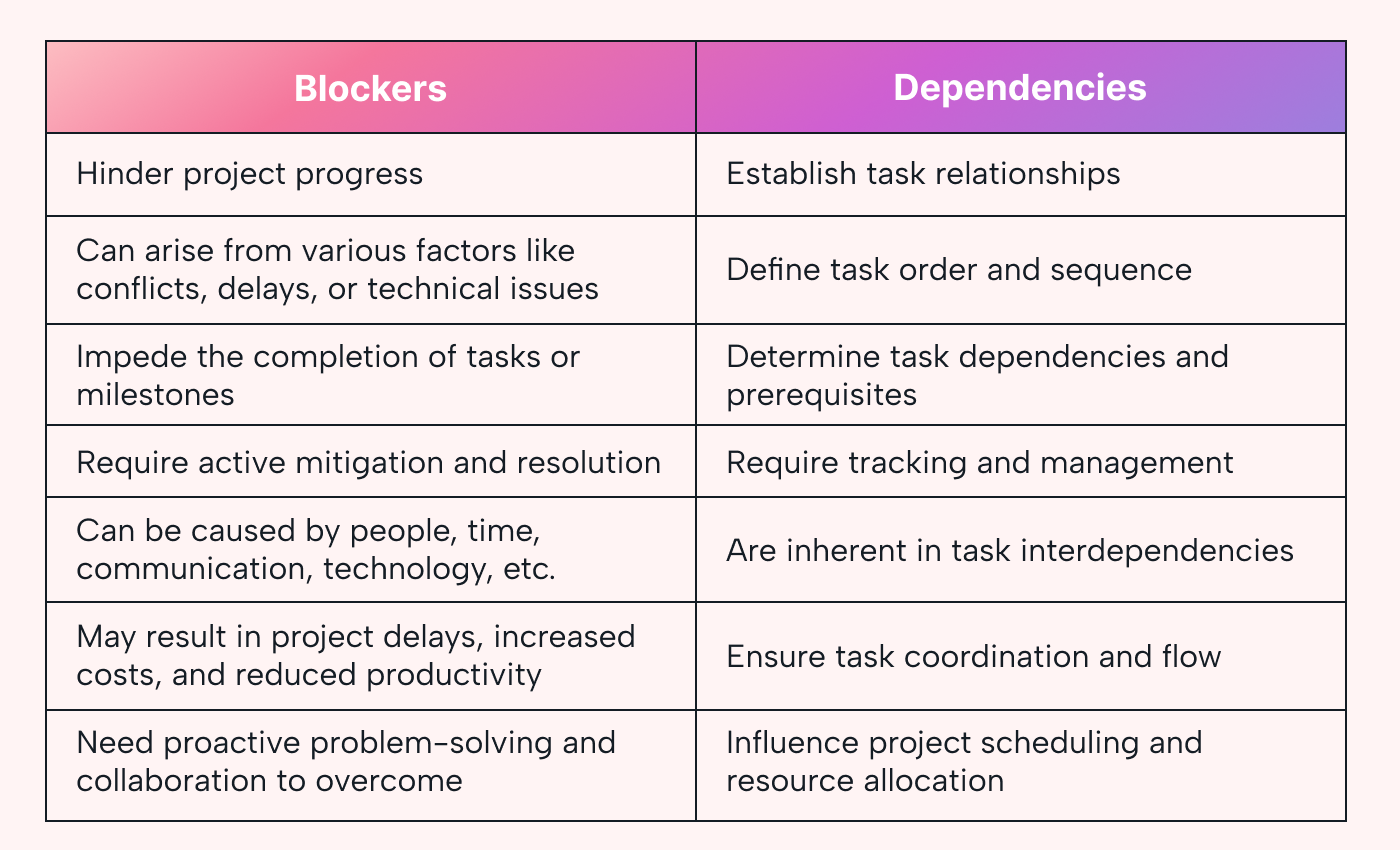 |
Blockers are obstacles or challenges that arise and prevent progress on a project. They can sometimes be created by dependencies, but often are caused by other events.
In contrast, dependencies refer to relationships between tasks or activities, similar to those we discussed in the baking example. Dependencies can impact not only the dependent tasks themselves, but also can affect resources, schedules, and cost.
So, blockers can be any kind of impediment that interferes with progress, while dependencies are relationships between tasks that dictate the terms of progress.
Let’s go to blockers in general, what types there are, how you know you have them, and what to do to remove or prevent them. Then we’ll jump to how Motion manages scheduling of dependencies and makes it super simple to implement.
Types of blockers
If you manage a project, you’ll probably encounter various blockers. Understanding these different blocker types can help you better spot and handle them.
Let’s go over each type and where they stem from:
- Task blockers: occur when a task is dependent on the completion of another task.
- People blockers: come from team members being unavailable or lacking necessary skills.
- Time blockers: arise due to insufficient time or delays from other dependencies.
- Outside dependency blockers: come from disruptions or delays because of third-party vendors or suppliers.
- Feedback loop blockers: happen when there’s impaired or delayed feedback from stakeholders or the team.
- Communication blockers: stem from miscommunication, unclear instructions, or a lack of effective communication channels.
- Technological blockers: can come from system failures or incompatible tools.
Symptoms of project blockers
After understanding the different types of blockers, let's now explore the symptoms of some of the blockers. Paying attention to these indicators allows you to address them early before they become a blocker.
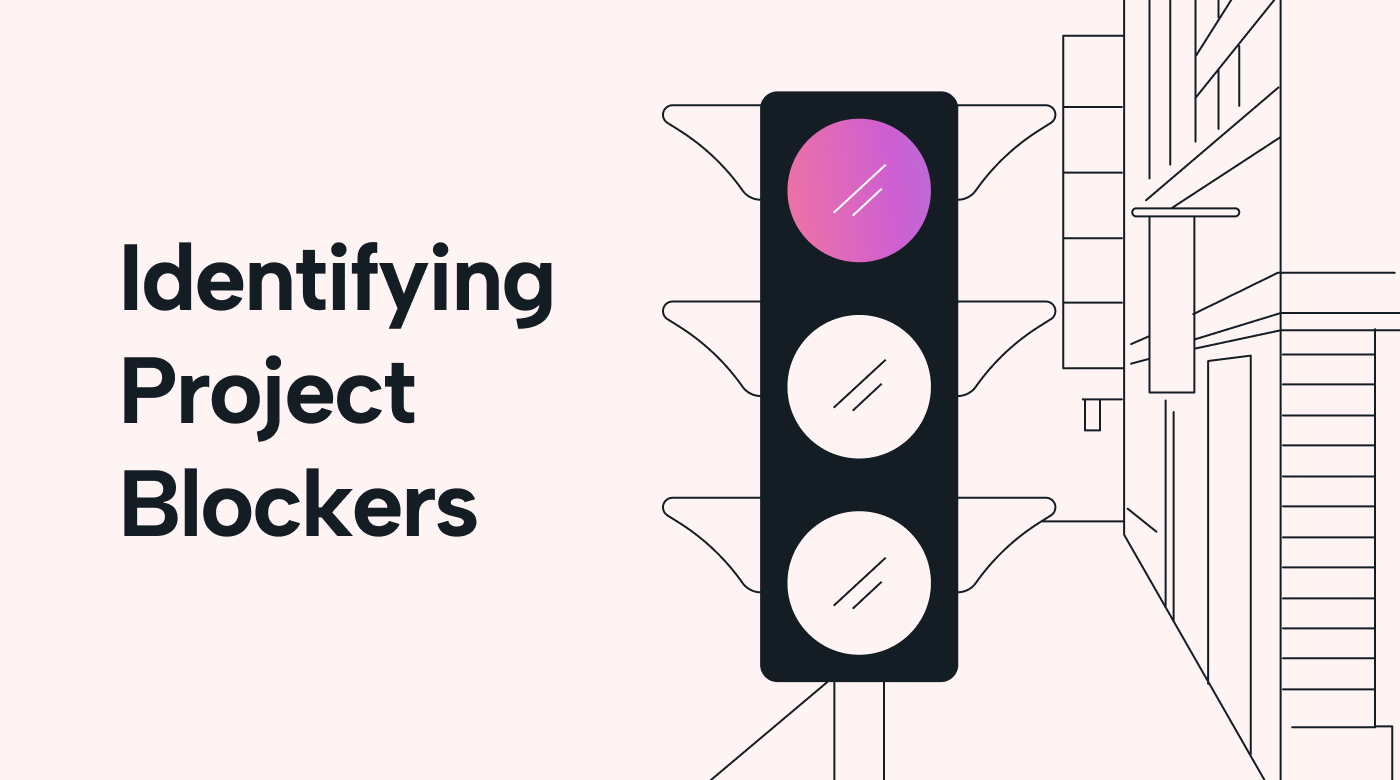 |
Here are some key symptoms to look out for:
- When deadlines are consistently missed, it’s a red flag that something’s amiss. It could mean that dependencies, resource constraints, or other obstacles are getting in the way.
- Frequent conflicts between team members or stakeholders often come from issues and can create blockers.
- Delayed feedback can slow down progress. It also indicates potential blockers in the feedback loop which are causing bottlenecks.
- Communication breakdowns or a lack of clarity is a clear symptom of a potential project blocker.
- Resource constraints can impede task completion and indicate a looming blocker.
- When the project scope keeps expanding beyond the original plan without proper control, it is a symptom of project blockers. Scope creep can come from unmanaged changes in the scope of the project.
- Lack of clarity in roles and responsibilities can result in confusion, inefficiency, and conflicts within the team.
Issues with blockers
In traditional project management, unresolved blockers can lead to many issues. For example, if a task blocker isn’t addressed, it can cause delays and throw off the entire project timeline. People blockers can create team conflicts, leading to misunderstandings and reduced productivity. Time blockers, like bad time allocation, can result in rushed work, lower quality, and higher stress levels.
In Agile, unresolved blockers can disrupt the iterative and collaborative nature of the approach. For instance, if a task dependency isn’t resolved, it can hinder the team’s ability to deliver incremental value within a sprint. Communication blockers can limit effective information sharing, restricting collaboration and feedback loops. Technological blockers can impede the team’s ability to deliver operating features during sprints.
Unresolved blockers in both traditional and agile methods can also lead to decreased customer satisfaction and increased risks. They can cause financial problems for your business and ultimately impact the project’s success.
Turning blockers around
Now we'll dive into how we can tackle project blockers head-on and transform them into opportunities for success.
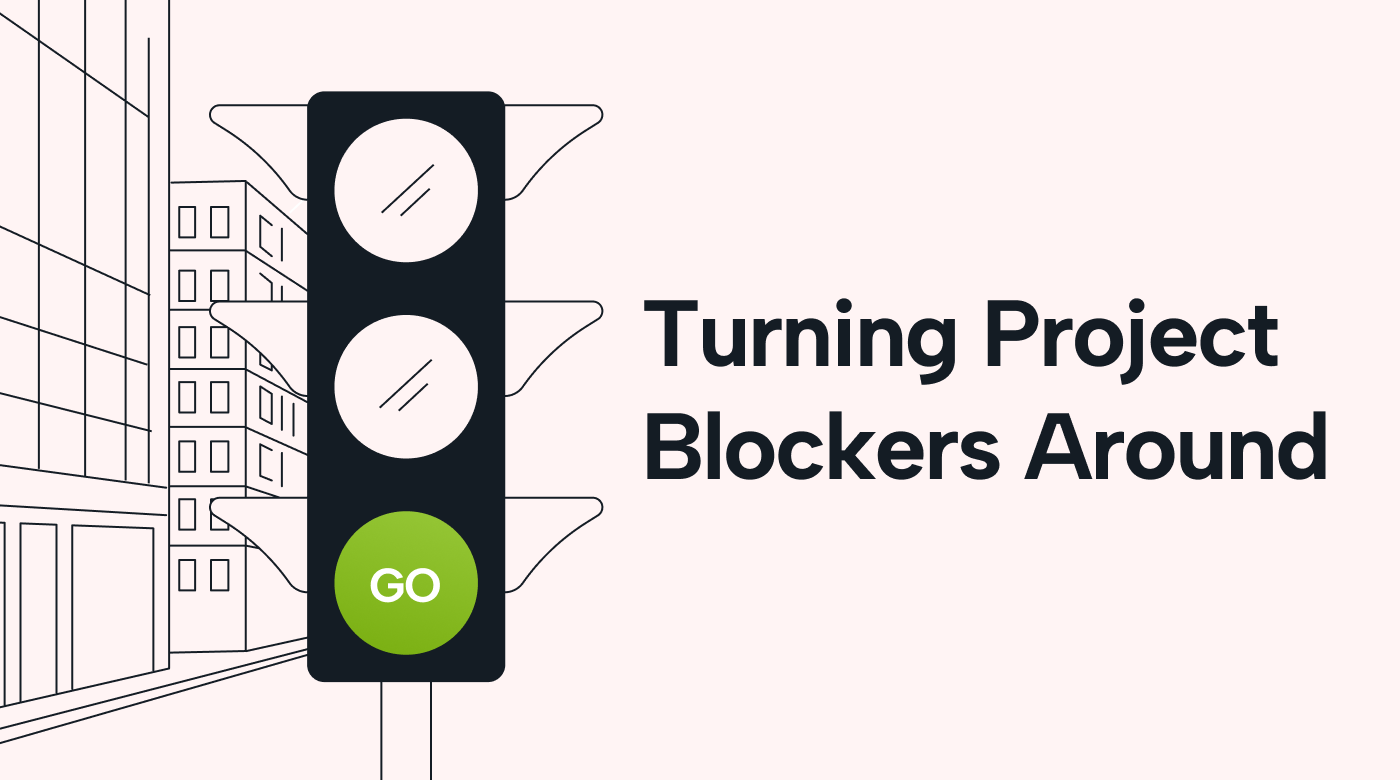 |
First, it’s helpful to identify blockers early on before they become issues. Try techniques like project status meetings, communication audits, risk assessments, and regular retrospectives. Use these methods to narrow down potential symptoms or blockers and help figure out solutions as quickly as possible.
Next, it’s essential to employ suitable strategies tailored to each issue. For people blockers, you can foster an open culture of cooperation within the team to overcome and enhance teamwork. You can also encourage innovative thinking, which the team can use for technical or resource blockers. In this type of work environment, the team can work together to identify solutions and learn how to do it autonomously.
We can reframe blockers as opportunities for growth and improvement. Rather than viewing them as barriers, consider them stepping stones to develop new skills, refine processes, and strengthen the team.
To help you in the process, here are some other practical tips to employ:
- Assess project progress and identify potential blockers
- Seek innovative solutions and think outside the box when facing blockers
- Maintain open lines of communication within the team
- Take advantage of digital tools and software designed to help identify, track, and resolve blockers
Turning blockers around in Agile project management
Agile practices provide a framework to help teams respond efficiently to blockers.
Daily stand-ups, for example, are an ideal Agile ceremony for identifying and handling blockers. Agile meetings encourage open communication and teamwork, allowing teams to address blockers.
Retrospectives are reflection meetings where teams review past work and processes. During this meeting, the team can figure out how to prevent similar blockers from happening in future projects.
Backlog grooming and sprint planning are helpful solutions for managing and prioritizing blockers. Here, the team can make sure to plan ways to solve any high priority blockers that they find. The Scrum sprint retrospective can be used to identify the cause of blockers in order to prevent them in future sprints.
Agile frameworks like Scrum or Kanban can provide transparency and visibility into blockers for the entire team. Scrum or Kanban boards visually represent work in progress and can help to spot blockers.
Other examples of Agile practices that target blockers include:
- Spike solution: this is a focused period to research or prototype when facing technical blockers.
- Pair programming: works to tackle complex challenges together, accelerating the resolution of blockers.
- Test-driven development (TDD): before coding, helps catch blockers early.
Motion handles project blockers
Projects often have dependencies where you have to do tasks in order (like the cake, but much more complex). Let's say you have to do tasks in order of A then B then C. Motion’s auto scheduling algorithm is intelligent and can handle these dependencies. In Motion terminology, a blocker is a task dependency.
If you indicate A blocks B, it will schedule B after A, and let you know if B will be overdue because A is taking too long. Not only that, as you’ll see, it can adjust schedules accordingly.
With its intelligent auto-scheduling algorithm and blocker feature, Motion offers a unique solution. Using its features, you can stay on top of tasks dependencies and make sure they follow the proper sequence.
With Motion, you can easily assign task dependencies (blockers) to specific tasks. To do it, simply click the “add blocker” option next to the task, and designate the dependent task. For instance, if Task B is dependent on Task A, and Task C is dependent on Task B, you can assign these blockers within Motion.
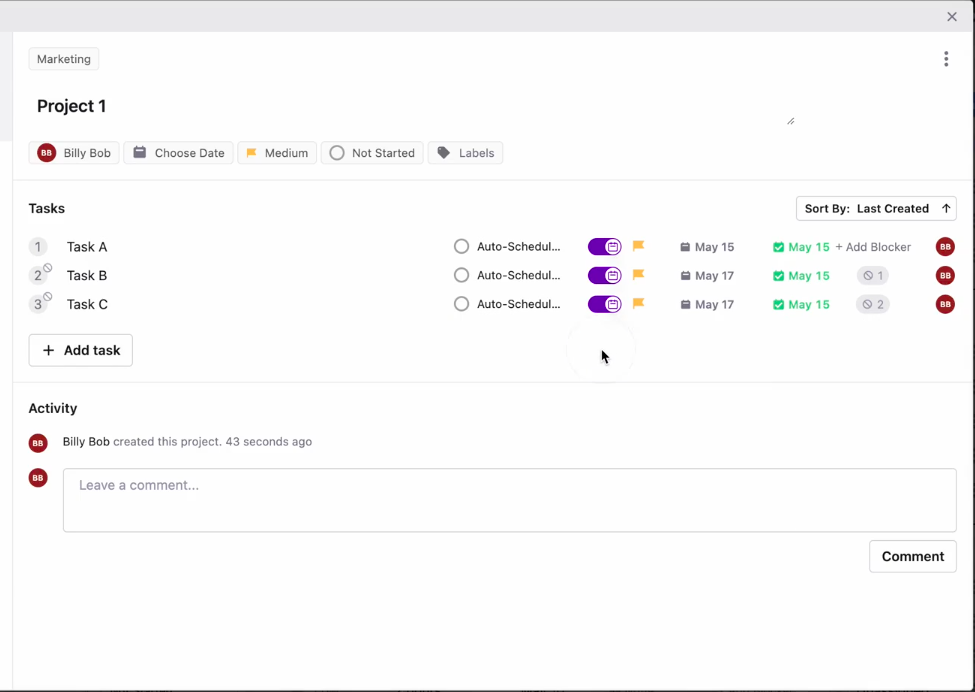 |
Motion’s advanced algorithm recognizes your assigned dependencies and schedules the tasks. In the calendar view, you can see the tasks planned in the correct order, considering their dependencies.
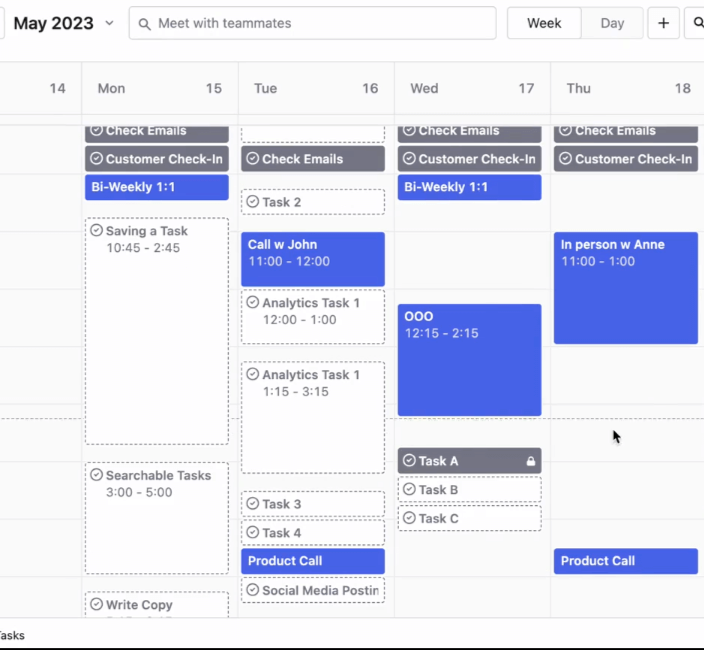 |
If you need to adjust the timing of a task, Motion adapts intelligently. When you drag a task to another day, the related tasks automatically follow, maintaining the correct order.
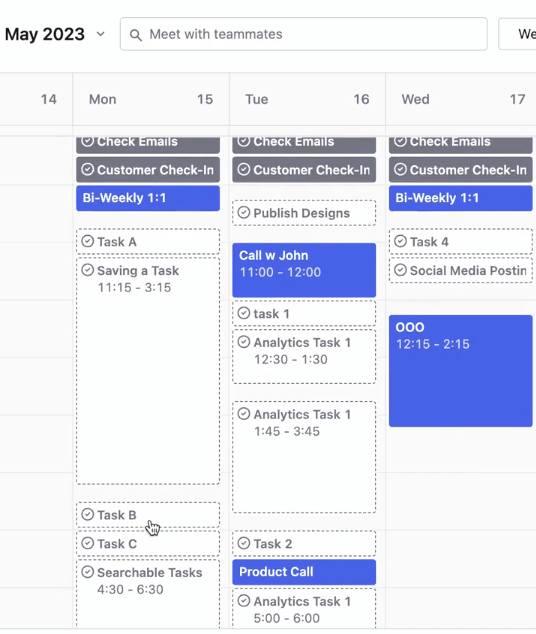 |
Motion keeps you informed about potential delays caused by blockers. If Task A is taking longer than expected and blocking Task B, Motion will alert you and suggest new time slots for tasks.
Motion also offers additional visual aids to manage blockers. When working with Kanban boards, you can use color coding to highlight blockers, even if they are in different columns. You can also use Motion for blocker clustering to group related tasks to see any dependencies.
Ready to try this game-changing software solution? Sign up for your 7-day free trial today.

